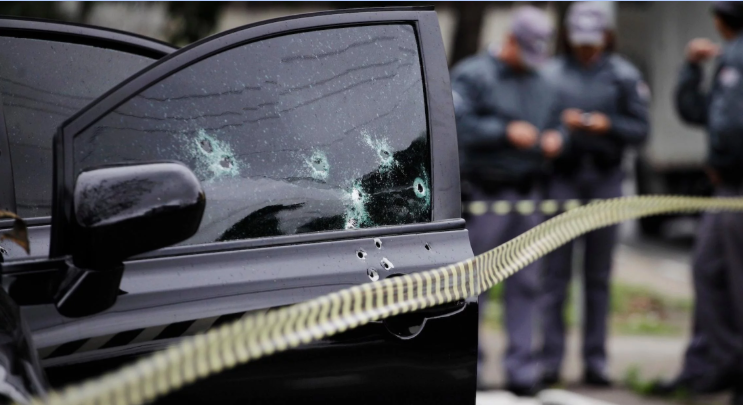Western donors drastically cut foreign aid in 2025, reigniting the familiar debate over whether aid works. This column examines how aid affects targeted political violence, looking at assassinations and attacks against politicians in 121 countries between 1990 and 2020. In regions receiving aid, targeted killings of politicians are 15%-20% higher in the years with aid inflows, especially where institutions are weak and elections are upcoming. Donors should avoid large transfers immediately before elections, consider direct cash transfers in fragile contexts, and incorporate political dynamics in risk assessments.
In mid-2025, the US government passed an unprecedented rescissions package that clawed back nearly $8 billion in foreign aid funds and dismantled USAID, its main development agency (Edmondson 2025). Other donors – including the UK, Germany, and Canada – implemented deep cuts of their own. With official development assistance projected to fall by 17% globally this year (OECD 2025), a familiar debate is reigniting: does aid work?
At the core of this debate are fundamental questions about aid’s effectiveness, legitimacy, and design. Supporters warn that recent cuts could lead to devastating humanitarian consequences, including up to 14 million additional deaths over the next five years (Cavalcanti et al. 2025). Sceptics counter that aid is often wasteful, politically driven, and vulnerable to abuse (The White House 2025).
The role of aid in steering conflict has long been recognised (Nunn and Qian 2014, Bluhm et al. 2021, Gehring et al. 2022). Our new research (Dreher et al. 2025) contributes another sobering dimension to this conversation. Development assistance can backfire by unintentionally triggering political violence against politicians. In particular, aid inflows increase the risk of targeted assassinations of local politicians – especially around elections and in countries with weak institutions – as a strategy for political actors to gain power and access aid resources.
It is well documented that targeted killings are a strategy to secure power in countries such as Mexico, where criminal organisations regularly assassinate mayors and candidates to gain control over government (Trejo and Ley 2021). In the Philippines, election-related killings are routine. South Africa has seen more than 100 local politicians assassinated since 2000, and in Ethiopia, opposition parties have repeatedly withdrawn from elections due to targeted intimidation. Another recent example is Colombia in June 2025, where a presidential candidate known for challenging the ruling party was shot at a campaign rally.
Foreign aid can trigger targeted violence because it is not just a source of development funding; it is also a resource to be controlled and allocated. In many low- and middle-income countries, local politicians enjoy considerable discretion over aid-funded projects. They use them to build patronage networks, reward supporters, and reinforce their political base (Jablonski 2014, Cruz and Schneider 2017). In such settings, winning office means gaining access to contracts, jobs, and budgets. Elections thus become high-stakes contests, and violence becomes a tool for securing power.
We examine how aid can affect incentives to use targeted political violence using newly geo-referenced data on foreign aid disbursements (Bomprezzi et al. 2025; also see Bomprezzi et al. 2024) and data on assassinations and attacks against politicians in 121 countries between 1990 and 2020 (shown in Figure 1). To identify the causal effect of aid on violence, we employ an instrumental variable approach that draws on exogenous variation in aid disbursements from 19 major donors. This strategy isolates the effect of aid inflows from other confounding factors such as conflict intensity or economic downturns.
Figure 1 Number of years with targeted political violence in ADM1 regions, 1990–2020


Notes: The map presents the distribution of the number of years with observed targeted political violence across first-level administrative division (ADM1) regions over the sample period, according to Global Terrorism Database data. We depict the less fine-grained ADM1-regions instead of our main analysis unit (second-level administrative divisions, ADM2), as it is difficult to decipher detailed entries in a map of all countries worldwide.
The analysis reveals a clear pattern: in the years that they receive aid, regions experience 15–20% more targeted killings of politicians compared to what the same regions experience in the years without aid. The increase is concentrated in countries with weak governance – places where political competition is intense and accountability mechanisms are limited – and those with upcoming elections. In short: when aid enters a fragile political environment during an election cycle, it can make the environment more fragile still.
Should donors stop sending aid to fragile or conflict-affected states? Not necessarily. Our findings do not imply that aid is inherently harmful. Development assistance can save lives, contribute to global public goods, and bring tangible commercial and geopolitical benefits to its donors (Lohmann et al. 2015, Dreher et al. 2024, Heidland et al. 2025).
However, the evidence suggests that donors need to pay closer attention to the political environments into which they disburse funds. Aid should not be evaluated only in terms of schools built or clinics staffed, but also in terms of its political side effects. In weak democracies, aid can become a weapon – one that raises the risk of political assassinations, deepens clientelism, and undermines state legitimacy.
There are practical steps donors can take to mitigate these risks. First, disbursement timing matters. Avoiding large transfers immediately before elections can reduce incentives for violence. Second, donors should recognise that conditions vary widely within countries: in places where elections take place or institutions are weak, direct cash transfers may be a more effective and less distortionary way to ensure aid reaches its intended beneficiaries (also see Dreher 2025). Third, risk assessments should incorporate political dynamics, not just economic need.
In fragile states, the question is not just whether to give aid, but how, when, and where. With better design and delivery, donors could support development without unintentionally destabilising the very countries they seek to help.
Source: cepr.org



